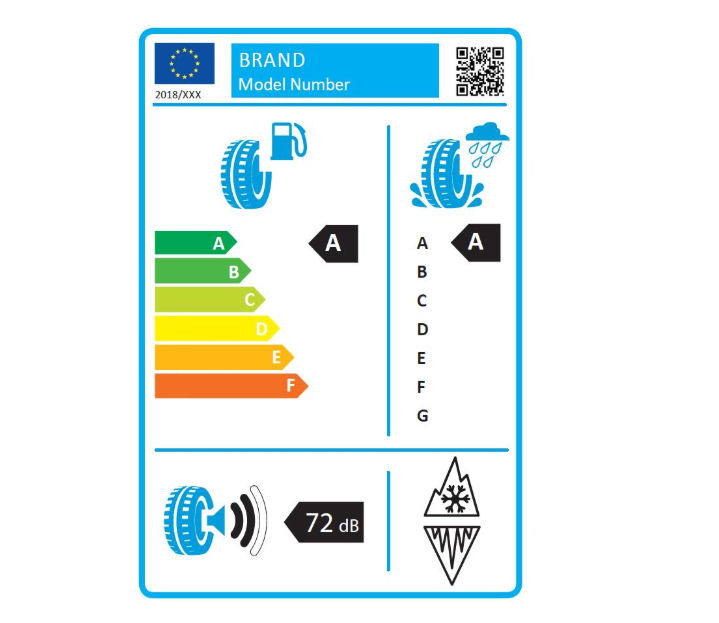Agreement reached on EU Tyre Labelling Regulation changes
 The updated label will include a QR code and ice grip information
The updated label will include a QR code and ice grip information
Proposed changes to the EU Tyre Labelling Regulation came a step closer to becoming reality on Wednesday when the European Parliament, Council and Commission reached a political agreement on the matter. The text of the Regulation now awaits formal approval by the European Parliament and the Council. Once both endorse the updated Regulation in the coming months, it will be published in the Official Journal of the Union and will enter into force 20 days after publication. The new Regulation will apply from 1 May 2021.
The European Union views the new Regulation as a vehicle for promoting clean mobility and states that the changes will deliver the equivalent energy savings as removing four million cars for EU roads every year.
“Energy efficiency first also applies to the way we drive,” comments Commissioner for Climate Action and Energy, Miguel Arias Cañete. “By switching to the most energy efficient tyres, European citizens can reduce their fuel consumption significantly, saving money and helping the environment. This is the European path to real energy security and climate protection: by being more energy efficient in all areas of our life, we can reduce our energy bills and our dependence on imported and costly energy, as we boost industrial competitiveness, create jobs and render the European economy more sustainable.”
The European Commission proposed the new Regulation on tyre labelling on 17 May 2018 as part of its clean mobility package. The aim of the new rules is to make the tyre labels more visible, more future proof and more accurate. They improve enforcement and market surveillance and they update the label scales to optimise the information on the label. The updated label design will be aligned with that of the well-known EU energy label while maintaining its original size and pictograms that consumers are familiar with.
EU targeting rolling resistance
According to the European Commission, energy consumption in road transport increased by 5.6 per cent between 2014 and 2017. As tyre rolling resistance accounts for 20 to 30 per cent of a vehicle’s fuel consumption, the EU wants to ensure that rolling resistance values improve further.
To address these issues, the European Commission presented, as part of the Low Carbon Mobility package in May 2018, a proposal to update EU Regulation (EC) No 1222/2009 on the labelling of tyres. Tyre labelling forms part of the European Union’s legislation on the energy efficiency of products. This includes ecodesign regulations, which set minimum requirements and energy labelling regulations, providing consumers with information helping them take environment-friendly purchasing decisions. In the case of tyres, the minimum performance requirements are set by the General Safety Regulation 661/2009.



Comments